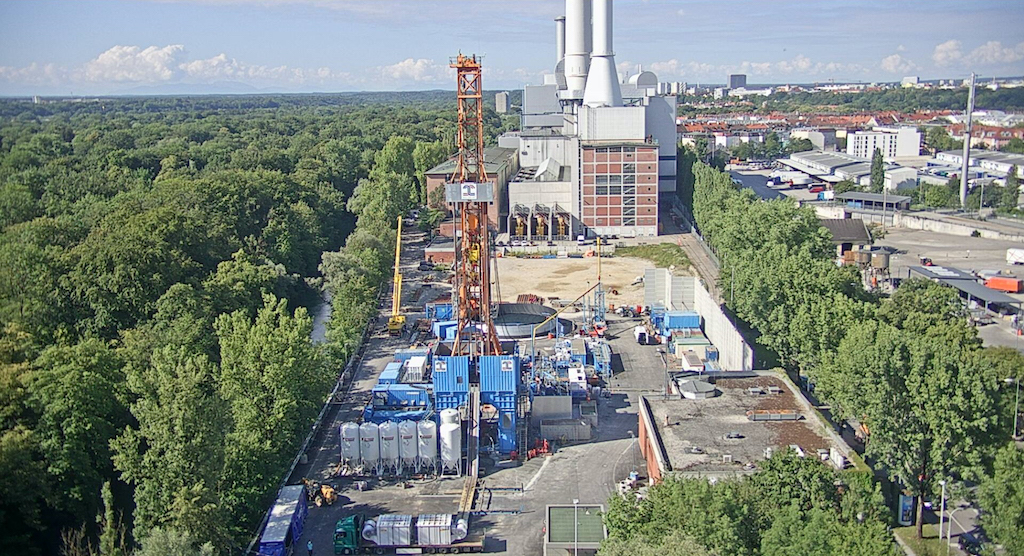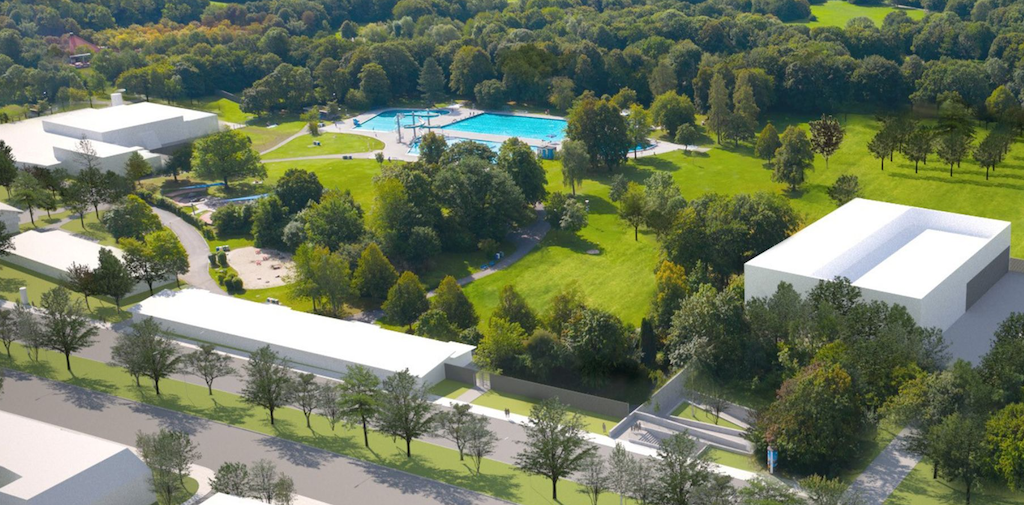Munich pushes ahead on further expansion of geothermal heating
The city of Munich is pushing ahead on plans for its 7th geothermal heating plant that would be providing heat to 75,000 inhabitants of the city by 2029.
The regional energy utility Stadtwerke Munich (SWM) has announced further steps on its energy transition efforts. SWM already operates six geothermal plants in and around Munich. The utility now announces wanting to build the seventh from 2024 on the grounds of the Michaelibad (swimming pools) in the south-east of Munich. After completion, it should provide enough heat for around 75,000 residents of Munich.
The project has now reached a first milestone in the approval process. In its preliminary decision, the local building commission approves the construction of the geothermal plant. The justification also referred to the special public interest in the climate-neutral conversion of Munich’s district heating. It makes specifications, among other things, for noise protection and tree protection.

Michaelibad: Optimal location in the south-east of Munich
While Munich’s youngest (and Germany’s largest) geothermal system is being tested at the southern energy location on Schäftlarnstrasse, SWM is already preparing for the next one: They are planning to build a geothermal system on the western lawn of the Michaelibad-System with up to four conveying and four reinjection lines. The Berg am Laim and Ramersdorf-Perlach district committees as well as the residents were informed several times in advance of the approval process and their wishes and suggestions were recorded. More on the project can be found here.
From the point of view of SWM, the Michaelibad location is ideally suited for the use of geothermal energy because:
- there is a high thermal potential in the subsoil,
- a connection to the district heating network can be easily implemented,
- there is a high demand for heat in the vicinity of the planned system – not least the pool itself, the heat supply of which could therefore be CO2-neutral in the future.
In addition to technical and operational requirements, the needs of nature, the people in the immediate vicinity and the outdoor pool guests also play a role in the ongoing preparations: after all, the disruptions to the construction and operation of the facility should be as small as possible. The specifications of the local building commission were therefore not surprising and were already taken into account in the planning.
The geothermal system will consist of two structural parts and will be built in the north-west corner of the outdoor pool area. The visualization on the right shows a first schematic representation of the position of the geothermal wells (on the lawn on the right) and the heat station (right in the middle of the picture). The exterior design will only be determined during further planning. Public participation is also planned.
Old, no longer used storage and service buildings of the pool at this point will be dismantled in advance so that these areas are available for the geothermal system. As a result, bathers will be able to use most of the sunbathing lawn again after the end of the construction work.
SWM’s plans are aimed at keeping disturbances to the neighborhood as low as possible, protecting the stock of trees and the sunbathing area, and at the same time increasing the attractiveness of the pool in the long term. Here, too, ideas should be developed together with citizens and incorporated into the concrete implementation.
Next steps
The technical planning for the geothermal wells and the heating station are currently being pushed ahead. Only the dismantling of the no longer used storage and operating buildings is currently visible on site.
Public participation for the exterior design of the facility and for increasing the attractiveness of the Michaelibad will start this year. The selected ideas then flow into the technical execution planning.
At the same time, the project is going through the regular building permit process, in which, among other things, the public is again involved.
The construction site is expected to be separated from the sunbathing area and set up in 2023.
According to previous plans, concrete work on the drilling site and heating station is to begin in 2024. Drilling is expected to begin in early 2025.
Commissioning could take place in 2029.
With this geothermal system, the renewable share of Munich’s district heating continues to increase. And Ramersdorf will become a “hotspot” in the truest sense – not only for outdoor and indoor pool fun, but also for the success of the heat transition.
SWM are working on the success of the warming transition
SWM supplies around 40 percent of Munich households with environmentally friendly heat via a district heating network that is around 900 kilometers long. Their vision: by 2040 at the latest, SWM wants to cover Munich’s district heating requirements in a climate-neutral manner. To achieve this, they rely primarily on deep geothermal energy.
Source: Company release


















